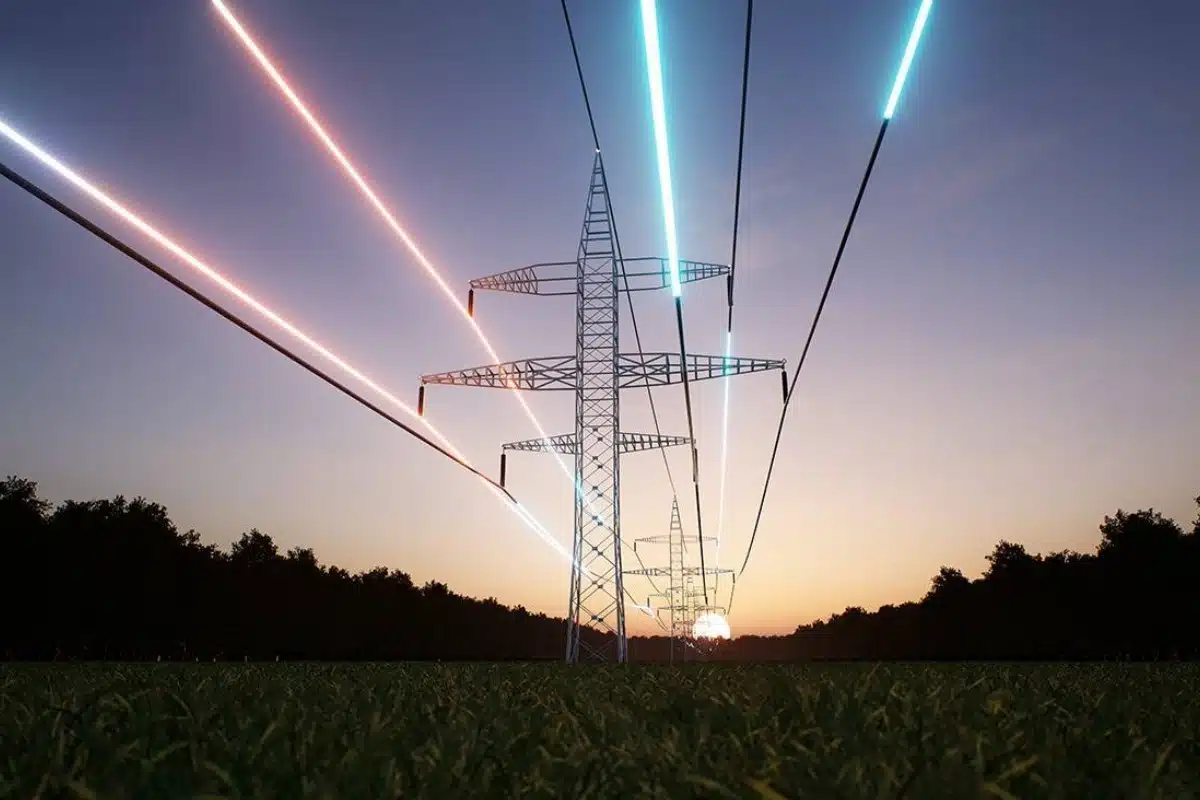For centuries, the ancient pyramids have captivated humanity with their architectural magnificence and enigmatic purposes. Beyond their role as tombs or monuments, researchers and alternative science enthusiasts have proposed that these structures may harness a unique form of energy—pyramidal energy—that could revolutionize our understanding of physics and open doors to unprecedented innovations.
The concept of pyramidal energy sits at the intersection of ancient wisdom and modern scientific curiosity. As we venture deeper into this fascinating subject, we’ll explore forgotten theories, examine experimental evidence, and consider how these lost sciences might inform contemporary technological breakthroughs. The journey ahead promises to challenge conventional thinking and inspire new perspectives on energy, consciousness, and the remarkable capabilities of geometric structures.
🔺 The Origins of Pyramidal Energy Theory
The modern fascination with pyramid power began gaining momentum in the 1930s when French hardware store owner Antoine Bovis visited the Great Pyramid of Giza. According to his accounts, he discovered mummified animals in the King’s Chamber that showed no signs of decomposition despite the humid conditions. This observation sparked his curiosity about whether the pyramid’s shape itself possessed preservative properties.
Bovis conducted experiments with scale models of pyramids, placing organic materials inside them and observing their preservation rates. His findings suggested that the pyramid shape created conditions that slowed decomposition significantly. This groundbreaking observation laid the foundation for what would become a worldwide investigation into pyramidal energy.
Czech radio engineer Karel Drbal expanded upon Bovis’s work in the 1940s, focusing on the practical applications of pyramid power. Drbal discovered that razor blades placed inside pyramid models regained their sharpness, leading him to patent a “Cheops Pyramid Razor Blade Sharpener” in 1959. His patent represented one of the first official recognitions of pyramidal energy phenomena by a governmental institution.
The Geometric Foundation: Why Pyramids?
The pyramid shape represents one of nature’s most stable and efficient geometric configurations. The specific proportions of the Great Pyramid of Giza—with a base-to-height ratio that approximates the golden ratio—have intrigued mathematicians and engineers for millennia. This precise geometry may create unique electromagnetic properties that differ from other architectural forms.
Pyramidal structures naturally channel energy from their broad base toward their apex, creating a focal point where energy concentration reaches its maximum intensity. This geometric focusing effect has been compared to how lenses concentrate light or how parabolic dishes focus radio waves. The four triangular faces meeting at a point create what some researchers describe as a “standing wave pattern” within the structure.
The Golden Ratio Connection ✨
The Great Pyramid’s dimensions incorporate the golden ratio (approximately 1.618), a mathematical constant found throughout nature in shells, galaxies, and human DNA. Some theorists propose that this specific proportion enables pyramids to resonate with fundamental frequencies in the universe, creating harmonious energy patterns that influence matter at molecular and atomic levels.
This mathematical precision wasn’t accidental. Ancient Egyptian architects possessed sophisticated knowledge of geometry, astronomy, and what we might today call “sacred geometry”—the belief that certain proportions and shapes carry inherent energetic properties that affect physical reality and consciousness.
Scientific Investigations and Experimental Evidence
Throughout the 1970s and 1980s, numerous researchers conducted experiments attempting to measure and validate pyramidal energy effects. While mainstream science remained skeptical, these investigations produced intriguing results that deserve examination.
Dr. Patrick Flanagan, an American inventor and author, conducted extensive research on pyramid effects on water structure and biological systems. His experiments suggested that water stored in pyramidal structures developed altered crystalline properties and improved taste. He theorized that pyramids influenced the hydrogen bonding patterns in water molecules, creating what he termed “structured water” with enhanced bioavailability.
Plant Growth and Agricultural Applications 🌱
Multiple independent studies examined pyramid effects on plant growth and seed germination. Researchers reported accelerated growth rates, increased yields, and enhanced resistance to pests in plants grown under pyramid structures or from seeds treated with pyramid exposure. While methodological concerns existed in some studies, the consistency of positive results across different researchers suggested potential agricultural applications worth further investigation.
Russian scientists at the Institute of Physics in Kiev conducted controlled experiments in the 1990s, placing seeds inside aluminum pyramid models before planting. Their published results indicated germination rate improvements of 20-30% compared to control groups, along with increased crop yields. These findings sparked interest in developing pyramid greenhouses for enhanced food production.
Theories Behind the Mechanism: How Does It Work?
Several theoretical frameworks have been proposed to explain pyramidal energy phenomena. While none have achieved universal scientific acceptance, each offers interesting perspectives on potential mechanisms.
The Orgone Energy Hypothesis
Wilhelm Reich, an Austrian psychoanalyst, proposed the existence of “orgone energy”—a universal life force that pervades all matter and space. Some pyramid researchers suggested that pyramidal structures accumulate and concentrate orgone energy, similar to Reich’s orgone accumulator devices. The pyramid’s geometry might create conditions that draw this subtle energy from the environment and focus it toward the center and apex.
Electromagnetic Field Interactions
More conventionally grounded theories focus on how pyramidal structures interact with Earth’s electromagnetic field. The pyramid shape may function as a passive resonator or waveguide for electromagnetic frequencies, creating standing wave patterns that influence chemical processes within the structure. Certain frequencies could theoretically accelerate or inhibit specific molecular reactions, explaining preservation effects and other observed phenomena.
Torsion Field Theory 🌀
Russian physicist Nikolai Kozyrev proposed torsion field theory, suggesting that rotating or spinning objects generate spiral energy fields that propagate through space independently of electromagnetic radiation. Some researchers theorize that pyramids generate torsion fields through their geometric shape, creating spiraling energy vortices that influence matter and consciousness. While controversial, torsion field research continues in several countries, exploring implications for energy generation and information transfer.
Consciousness and Pyramidal Structures
Beyond physical effects on matter, pyramid researchers have investigated influences on human consciousness and mental states. Numerous individuals report enhanced meditation experiences, improved focus, and altered states of consciousness when meditating inside pyramid structures.
Studies using electroencephalogram (EEG) measurements have shown changes in brainwave patterns among subjects meditating within pyramids compared to control environments. Some research indicated increased alpha wave activity associated with relaxed alertness and theta waves linked to deep meditative states. These findings suggest pyramids may facilitate access to altered consciousness states conducive to creativity, insight, and spiritual experiences.
The Pineal Gland Connection
Some theorists propose that pyramidal energy specifically influences the pineal gland—a small endocrine organ in the brain associated with melatonin production and, in esoteric traditions, spiritual awakening. The concentrated energy at the pyramid’s apex, positioned at head level when sitting inside, might stimulate pineal activity through subtle electromagnetic or quantum effects, enhancing intuitive capabilities and expanded awareness.
Modern Applications and Technological Potential
Despite skepticism from mainstream science, pyramidal energy concepts continue inspiring practical applications and technological innovations. Contemporary researchers and inventors are exploring how these principles might address modern challenges.
Energy Generation Possibilities ⚡
Some inventors have developed pyramid-based devices claiming to generate usable electrical energy by harvesting ambient electromagnetic radiation or tapping into zero-point energy fields. While most claims remain unverified by independent testing, the theoretical possibility of geometric structures functioning as passive energy collectors warrants serious investigation given global energy challenges.
Ukrainian researchers constructed large pyramid structures and reported measurable improvements in local environmental conditions, including reduced seismic activity and improved atmospheric clarity. If validated, such effects could inspire large-scale pyramid construction for environmental remediation and natural disaster mitigation.
Health and Wellness Technologies
Pyramid-shaped devices marketed for health applications include meditation pyramids, water structuring units, and personal energy enhancement tools. While scientific validation remains limited, anecdotal reports from users suggest potential benefits including improved sleep quality, reduced stress, enhanced vitality, and accelerated healing processes.
Some alternative health practitioners incorporate pyramid structures into treatment protocols, positioning patients inside pyramids during therapy sessions. They report enhanced effectiveness of various treatments, though distinguishing specific pyramid effects from placebo responses remains challenging without rigorous controlled studies.
Critical Examination: Separating Fact from Fiction
Intellectual honesty requires acknowledging the controversies and limitations surrounding pyramidal energy research. Many studies lacked proper controls, suffered from confirmation bias, or failed replication attempts. The absence of a verified physical mechanism explaining pyramid effects raises legitimate scientific concerns.
Skeptics argue that observed phenomena result from experimental errors, selective reporting, or psychological factors rather than genuine energy effects. The preservation of organic materials, for instance, might reflect reduced air circulation within pyramid models rather than mysterious energy fields. Enhanced plant growth could result from subtle environmental differences unrelated to the geometric shape itself.
The Need for Rigorous Research 🔬
For pyramidal energy to gain scientific credibility, research must meet stringent methodological standards including double-blind protocols, adequate sample sizes, proper statistical analysis, and independent replication. Modern measurement technologies unavailable to earlier researchers—including sensitive electromagnetic field detectors, quantum sensors, and advanced imaging systems—could finally provide objective data resolving longstanding debates.
Rather than dismissing pyramid research entirely or accepting all claims uncritically, the scientific community should approach this field with open-minded skepticism, conducting careful investigations that either validate these phenomena or definitively explain them through conventional mechanisms.
Bridging Ancient Wisdom and Modern Innovation
The pyramidal energy concept exemplifies a broader pattern in human knowledge—the periodic rediscovery of ancient principles that modern science initially dismissed but eventually validates through contemporary understanding. Throughout history, traditional practices once labeled as superstition have revealed genuine effectiveness when examined with appropriate tools and frameworks.
Ancient civilizations possessed sophisticated knowledge of astronomy, materials science, acoustics, and possibly energy phenomena that exceeded what conventional historical narratives acknowledge. The precise astronomical alignments of pyramids worldwide, their advanced construction techniques, and their enduring mystery suggest that our ancestors understood principles we’re only beginning to rediscover.
Biomimicry and Sacred Geometry
Modern biomimicry—designing technologies inspired by natural patterns—demonstrates how ancient principles remain relevant. The pyramid shape appears throughout nature in crystal formations and molecular structures, suggesting evolutionary or physical reasons for its prevalence. By studying why nature favors certain geometries, we might unlock technological applications that ancient builders intuitively understood.
🚀 Future Directions: A New Era of Innovation
As we advance into an era demanding sustainable energy solutions, novel health technologies, and expanded consciousness, pyramidal energy theories offer unexplored possibilities. Whether these effects prove to involve subtle energies unknown to current physics or reflect conventional phenomena misunderstood by early researchers, the investigation itself drives innovation and challenges limiting paradigms.
The integration of artificial intelligence, quantum computing, and advanced materials science with pyramid research could yield breakthroughs. Machine learning algorithms might detect subtle patterns in experimental data that human researchers missed. Quantum sensors could measure previously undetectable field effects around pyramidal structures. Metamaterials might amplify pyramid properties for practical applications.
Collaborative Research Initiatives
Progress requires collaboration between open-minded conventional scientists, alternative researchers, engineers, and traditional knowledge keepers. Establishing well-funded research programs with proper equipment and expertise could finally resolve whether pyramidal energy represents genuine physical phenomena or merely reflects psychological and conventional environmental factors.
Universities and research institutions willing to explore controversial topics without academic prejudice could make significant contributions. Citizen science projects involving thousands of participants conducting standardized pyramid experiments might generate robust data sets impossible for individual researchers to collect.
Practical Steps for Personal Exploration
Individuals curious about pyramidal energy can conduct personal experiments with modest investment. Building or purchasing small pyramid models aligned to cardinal directions, placing objects inside for specified periods, and carefully documenting observations provides firsthand experience with these phenomena.
Experimentation areas include food preservation, water treatment, seed germination, meditation enhancement, and crystal charging. Maintaining detailed records, using control groups, and approaching results with healthy skepticism helps develop critical thinking while exploring unconventional ideas.
Awakening to Forgotten Possibilities 🌟
The mysteries of pyramidal energy remind us that human knowledge remains incomplete and that dismissing ideas simply because they challenge current paradigms limits our potential for discovery. Throughout scientific history, revolutionary breakthroughs often emerged from investigating phenomena that mainstream thinking initially rejected.
Whether pyramidal energy ultimately validates as a genuine physical phenomenon or teaches us valuable lessons about experimental rigor, consciousness, and the power of belief, the exploration itself enriches our understanding. By maintaining intellectual humility while pursuing rigorous investigation, we honor both scientific methodology and the innovative spirit that drives human progress.
As we face unprecedented global challenges requiring creative solutions, perhaps the ancient pyramids still have wisdom to share—not as relics of a primitive past, but as monuments pointing toward forgotten sciences that could illuminate our future. The journey to uncover these mysteries continues, inviting curious minds to question assumptions, conduct careful experiments, and remain open to possibilities that could transform our world in ways we’ve barely imagined.
Toni Santos is a visual researcher and educational designer specializing in tactile learning tools, exploring how hands-on, sensory experiences can illuminate ancient construction techniques, lost technologies of early civilizations, sacred geometries and earth alignments, and mysterious energy sources. Through embossed maps, textured models, and handcrafted manipulatives, Toni investigates how physical interaction deepens understanding, memory, and creativity, while uncovering the subtle ways these tools convey knowledge across cultures and ages. Blending design theory, educational psychology, and archival research, Toni curates case studies, visual explorations, and instructional resources that celebrate the craft, innovation, and cognitive power of touch-based learning, inviting educators, designers, and curious minds to engage with the hidden patterns and energies that have shaped human history.




